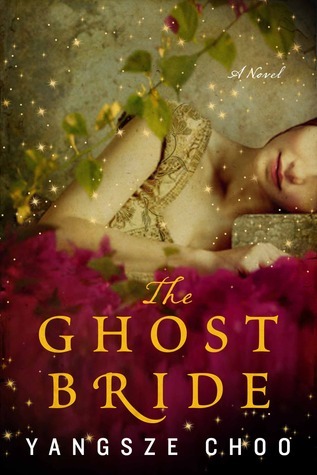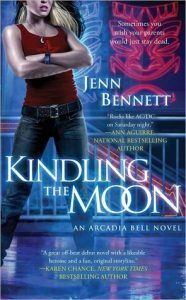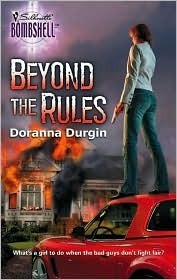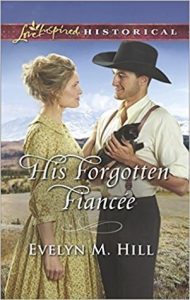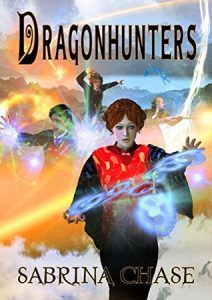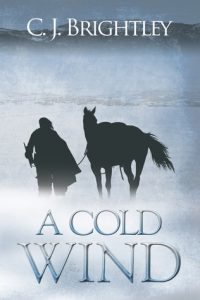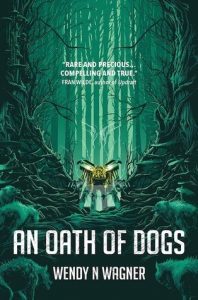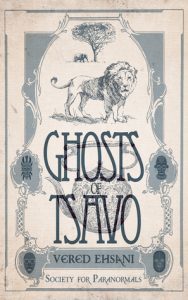Rachel Neumeier's Blog, page 241
February 7, 2018
What Marriage Is, and Was
Here’s a great post by Marie Brennan at Book View Cafe: New Worlds: Marriage
At its core, marriage is a form of alliance. These days it’s first and foremost an alliance between the spouses, and usually for reasons of personal happiness, but that’s a product of the general focus on individualism that dominates our society right now. It used to be an alliance between larger groups than that. Families, or lineages, or businesses, or estates, or even entire kingdoms: the people directly involved were representatives of those groups, rather than acting solely for themselves. … the counterpart to alliance is inheritance; you often need or at least want offspring who will inherit the business, the land, the connections to the parent families.
I’ve been very pleased overall with how readers have responded to the politically motivated marriage of Innisth and Kehera in WINTER OF ICE AND IRON. Of course this relationship doesn’t work for everyone. Still, it’s the most unromantic sort of situation, which was historically certainly not rare for important people. Though I hope most readers appreciate the perhaps somewhat subtle romance that appears and grows within the political arrangement.
Anyway, Brennan then goes on to briefly mention odd marriage customs one might use in writing SFF. This instantly made me think of my very favorite odd marriage custom, seen for example here:
I have tried reading the book, btw, and kind of lost interest part way through. Setting and description: wonderful. Ghost bride plot element: wonderful. Protagonist: kind of a twit. I would like to go back and finish this story, though.
I just love the idea of the ghost bride. You could do all kinds of twists on that if you were developing a secondary world fantasy.
Even more interesting is the custom of marrying a tree, seen sometimes in India because it puts the astrological bad luck carried by the bride on the tree instead of her actual husband. This idea could be spun off into all kinds of interesting customs in a secondary world culture, tied into all kinds of deeper traditions and beliefs.
One very practical custom in Japan was, and is, the idea of adopting an adult male as the heir of a family, marrying him to a daughter of the family, and thus continuing the family line or establishing a younger son as the “first-born” son of a different family. Wikipedia has this to say about the custom:
The centuries-old practice was developed as a mechanism for families to extend their family name, estate and ancestry without an unwieldy reliance on blood lines. … From the point of view of the adopted son, it was not so much an increase of class position, but rather a way to receive an independent life by becoming a first-born son. This does not mean that there were no vertical jumps in the social stratum by less wealthy individuals, but it was significantly less common. By being adopted, second-born sons were able to take over as the heads of households, and become the leader of the family business as well as a leader within the community itself.
This sure goes right back to Brennan’s point about marriage (and other family structures) being used as a way to arrange family or business matters. It’s hard to think of customs very different from the ones you grew up with, which is why people who write fiction ought to pay attention to nonfiction for background and ideas that depart from the familiar. Brennan’s is an interesting post that serves as a jumping-off point for countless worldbuilding possibilities!
Please Feel Free to Share:









More than 60,000 hidden Maya ruins found in Guatemala
Wow: Laser Scans Reveal Maya “Megalopolis” Below Guatemalan Jungle
[T]he survey has yielded surprising insights into settlement patterns, inter-urban connectivity, and militarization in the Maya Lowlands. At its peak in the Maya classic period (approximately A.D. 250–900), the civilization covered an area about twice the size of medieval England, but it was far more densely populated.
“Most people had been comfortable with population estimates of around 5 million,” said Estrada-Belli, who directs a multi-disciplinary archaeological project at Holmul, Guatemala. “With this new data it’s no longer unreasonable to think that there were 10 to 15 million people there—including many living in low-lying, swampy areas that many of us had thought uninhabitable.”
Virtually all the Mayan cities were connected by causeways wide enough to suggest that they were heavily trafficked and used for trade and other forms of regional interaction. These highways were elevated to allow easy passage even during rainy seasons. In a part of the world where there is usually too much or too little precipitation, the flow of water was meticulously planned and controlled via canals, dikes, and reservoirs.
Among the most surprising findings was the ubiquity of defensive walls, ramparts, terraces, and fortresses. “Warfare wasn’t only happening toward the end of the civilization,” said Garrison. “It was large-scale and systematic, and it endured over many years.”
Very cool findings. I’d seen a couple brief notices about this, but I look forward to finding out more as archaeologists collect more data.
Please Feel Free to Share:









February 5, 2018
Adorableness: the intersection of D&D and Dogs
Via tor.com: “Dungeons and Doggos” Gets a Natural 20 for Adorableness
It’s a webcomic: Dragons and Doggos.
You have to admit, that’s pretty adorable.
Here’s the link for the tumblr webcomic, if you quite reasonably feel you must follow this D&D campaign a little farther.
Please Feel Free to Share:









I’m playing around with back cover copy —
Back cover copy is hard to write. I’ve been trying to come up with something for the back cover description of my collection of shorter works — the non-Black Dog stories, you know, the collection I have tentatively titled Beyond the Dreams We Know.
Here’s the back cover copy I came up with just now:
In the world of City in the Lake, entering the great forest may lead you to your heart’s desire . . . but the one certainty is that the forest always has its own desires, and might very well tilt anyone’s quest to its own ends.
***
In the whole history of the Floating Islands, no girl has ever put on wings and taken flight. Now a special audition has just been announced, and despite her responsibilities, Nescana isn’t sure she can resist at least trying to make a new life for herself among the kajuraihi.
***
The Lord of the Delta is a busy man. But every now and then, Bertaud manages to take a day away from his duties. Just one day for himself. What could possibly go wrong?
***
Erest’s family knew they might risk unknown dangers when they first chose to build their home in the shadow of the Kieba’s mountain, but she hasn’t seemed offended by their presumption . . . yet. When disaster strikes, could Erest dare turn to the Kieba for help?
***
In a world much like our own, no one expects mysterious, beautiful dragons to begin emerging from earth and stone. But even when mystery and magic isn’t concerned with us at all, it can change our lives . . .
***
Rediscover four worlds and explore a new one in Neumeier’s first collection of short fiction.
What do you think? I know it’s not technically my first collection. But first Non Black Dog Collection seems so clunky. Not sure what to say to tie up the back cover description, if anything.
Not actually 100% sure what’s happening in Bertaud’s story, btw. I’ve barely started that one yet.
Please Feel Free to Share:









February 2, 2018
Sheep
This post by Robert Kroese at tor.com caught my eye: Sheep in science fiction and fantasy.
It’s a funny post:
I hadn’t even noticed the pattern until my editor brought it to my attention. “Rob,” she said, peering at me over a stack of my books on her desk, “why do you keep writing about sheep?”
“I have no idea what you mean,” I replied, taking a seat across from her. “I write very highbrow literary-type science fiction novels.”
She grabbed a copy of Mercury Rests from the top of the pile. “Page 243. You have a reference to an ‘exsanguinating sheep’.”
“Well,” I said, “what other animal are you going to sacrifice on top of a volcano?” I asked.
“And here in Mercury Rises,” she said. “Page 128. You have an exchange where an angel attempts to convince the biblical character Noah to trade his sheep for bricks.”
“That’s for the Settlers of Catan crowd,” I said. “I can’t help the fact that sheep are a key element of the game.”
And so on. Sheep everywhere. Or almost everywhere. Kroese does rather stretch a point with some of the books he includes, but since he’s not taking himself seriously, that’s fine. It’s a fun post.
But what it made me think of was a slightly broader category: Sheep in murder mysteries. Specifically, sheep in Leonie Swann’s entertaining and unique murder mystery Three Bags Full, which as you may know features sheep as the main characters and protagonists. Come to think of it, that’s fantastic enough right there to qualify this story for the fantasy genre as well as mystery.
On a hillside near the cozy Irish village of Glennill, the members of the flock gather around their shepherd, George, whose body lies pinned to the ground with a spade. George has cared for the sheep, reading them a plethora of books every night. The daily exposure to literature has mde them far savvier about the workings of the human mind than your average sheep. Led by Miss Maple, the smartest sheep in Glennill (and possibly the world), set out to find George’s killer…
Delightful, eh? Of course the sheep are pretty sure the butcher did it. I mean, of course the butcher, right? A butcher would be capable of anything, obviously.
It’s a charming story. The sheep are such . . . sheep. Here is a scene where they are thinking about Melmoth, a mysterious ram who left the flock for a while and has now returned, bearing unusual wisdom:
The sheep noticed that Melmoth was not just one more sheep in their flock. They couldn’t explain to themselves exactly why. Melmoth was a disruptive influence. When Melmoth grazed with them the flock could hardly manage to stay in formation. Instead they scattered as if a wolf had broken in among them. They scattered at grazing pace, of course, which meant very slowly, almost imperceptibly. It began to feel eerie.
Melmoth tells quite creepy ghost stories as well as teaching the sheep to “herd themselves” – resist being herded by dogs or men. He’s quite a sheep, is Melmoth. But all the characters are well drawn and delightful. This is definitely my favorite book featuring sheep — and probably the single novel where sheep are most thoroughly front-and-center.
Remember the Freddy the Pig books? Did you ever have a chance to read those when you were a kid? I bet there were sheep in them, but I fear I don’t remember any specific characters other than Freddy, Jinx the cat, an owl, a couple of cows . . . now that I think of them, I can remember specific scenes that still make me smile.
Anybody got another story that involves sheep?
Please Feel Free to Share:









February 1, 2018
Which authors show the greatest range of quality within their published works?
In a comment on the recent “Almost-Classics” post, SarahZ says: “Orson Scott Card’s personal hangups and religious agendas can sometimes sabotage his books, so I think he might have some other candidates for this list, but I agree regarding Xenocide [being a failed book].”
I responded: “I think that several others of OSC’s books have failed in more or less interesting ways, though his books can also be tremendously good. He definitely shows a wide range of quality in his work, more than almost any other author I can think of. As far as I’m concerned, though, Xenocide stands out for really turning into a hot mess toward the end.”
This got me thinking about other authors who show this amazing difference in quality — not style, not theme, not genre, but actual quality — from one book to the next.
Now, virtually every one of my favorite authors who’s written more than, say, ten books, has written at least one that I disliked, or even hated. Steven Brust, check. Barbara Hambly, check. That’s why they each have an entry on that “almost classics” post. But also Gillian Bradshaw, Juliet Marillier, Patricia Wrede, CJ Cherryh (yes, really), and even, though it’s even harder to believe than CJC, Patricia McKillip.
But here I’m not trying to think of authors who’ve written a lot of great books that I’ve loved plus one book or a couple of books that I hated. I’m trying to think of authors who have written a lot of great books and also quite a few dreadful books — about the same variations in quality as one sees in Orson Scott Card’s books. Ender’s Game was excellent. Xenocide was terrible. The Lost Boys, one of his early books, was very good (have any of you read that?). Then Homebody, one of his later works, had the oddest structural flaws so that it was quite readable but, I would argue, a failure as a coherent story. And so on.
Barbara Hambly is another author much like that. I use her all the time as an example of how to do wonderful settings and characters and excellent opening scenes — Dragonsbane is my go-to example of how to write the opening scenes of a fantasy novel. Then the next books in that series are so awful. She’s written so many wonderful books — Bride of the Rat God (Yes! Really! The title is corny on purpose), Stranger at the Wedding, the Ysidro vampire stories, the Benjamin January mysteries, lots more. The Time of the Dark trilogy was very good. The associated standalone Mother of Winter was so bad I didn’t finish it. The Nazi duology (Rainbow Abyss, Magicians of Night) was somehow just so boring that I didn’t make it through the first book.
I can think of just one more author who shows this kind of variability — Elizabeth Moon.
Elizabeth Moon wrote the excellent Paksennarion books, followed much later by the far less coherent and frankly rather boring Paladin’s Legacy books set in the same world. She wrote the wonderful space opera Hunting Party, which had several decent sequels and then devolved into, again, a less coherent connected series (the Esmay Suiza books) that I personally found unreadable. The Speed of Dark is, as far as I’m concerned, one of the ten best SF novels of all time (If you haven’t read that one, well, rush right out. Seriously.)
It’s a stunningly wide range of quality.
Surely I don’t need to add that all these judgments are subjective. (But I’m definitely right.)
Some writers start off strong and then totally lose it, either because their editors quit editing their work or because they quit editing their own work (or both, I suppose). Laurell Hamilton’s Anita Blake series comes forcefully to mind. But so does Stephen King, imo. Some of his early work is outstanding. Then suddenly he decides he will ALWAYS insert a sweet female character in order to provide a tearjerker moment when he kills her, even if he has to do violence to the plot to make that happen. I quit reading his books because they seemed so blatantly, obviously manipulative of the reader. I don’t believe a decline that seems permanent is quite the same thing as huge, unpredictable variation in quality from one book to the next.
How many authors can you think of with that kind of variation? It’s harder because you can’t make that kind of judgment except with prolific authors who have quite a lot of books out, most of which you’ve read. I expect there are others, but the phenomenon does seem rare.
Please Feel Free to Share:









January 30, 2018
Almost-Classics
Here’s an interesting post from James Davis Nicoll at tor.com: Almost-Classics: SF Concepts and Settings That Deserve Better Execution
Now, Nicoll is undoubtedly more into golden-age SF than I am, but let’s just see how he defines almost-classics and which works he picks out as belonging to the category:
Something I was reminded of while watching the third, most famous movie version of The Maltese Falcon: the works to remake in one’s own image aren’t the classics but the almost-classics, the works whose central conceit was much better than the final product. Singular, perfect works are hard to improve on but there are lots of books and films sabotaged by their creator’s shortcomings and the commercial realities of the day. If anyone wants an essay on “books I wish someone would use as a springboard for executions that are actually good,” just ask.
That’s worth bringing up these days in particular, when Hollywood seems perfectly willing to re-do absolutely everything, no matter how stupid. (I’m thinking here of George of the Jungle.) If Hollywood doesn’t plan to invest in actually new works, what ought it be revising and revisiting?
Here’s what Nicoll suggests:
1. Fred Pohl and Jack Williamson’s The Starchild Trilogy — Nicholl feels that the setting was fantastic, but all its potential lost in the telling of “perfectly conventional tales about heavy-handed dictatorships with ambitions of total rule” and so on. I don’t know; maybe I would like these perfectly conventional tales? Following conventional storylines can be fine if the story is well told. Granted, I have never been crazy about the pulp style.
2. Poul Anderson’s The Makeshift Rocket — I am interested in Nicholl’s comments here which at first I thought clarified his criteria for this list, so I’ll pull this one out:
The Makeshift Rocket may have had its roots in Anderson’s desire to sell something to John W. Campbell …. Anderson may also have been thinking of Jack Williamson’s SeeTee novels when he created a world in which the gyrogravitic generator gave anyone with enough money the ability to reach and terraform an asteroid. What a setting! There are almost a million asteroids more than a kilometre in diameter in the asteroid belt (twenty five million if all you want is a Little Prince-sized estate). All of them could be home to a pocket nation. That would be more worlds than many galactic empires.
Anderson touches on the potential of his setting, but the story he tells is a rather tiresome comic retelling of the Fenian Raids, one based on the notion that ethnic stereotypes are funny, as are the daffy girls who insist on tagging along with the guys’ adventure. There is so much potential here. Anderson leaves most of it on the table.
Well, I’m not familiar with the Fenian Raids. Anticipating that some of his readers might not be, Nicoll’s adds a footnote: The Fenian Raids were a 19th century attempt by Irish nationalists to steal Canada so they could then blackmail Britain into granting Irish independence. That may seem an excessively audacious proposal but to quote my review of The Makeshift Rocket, “it failed by a lot less than you would expect from ‘rag-tag rebels attempt to heist an entire god-damned country.’”
Interesting! Indeed, doesn’t sound like the “comic retelling” of Anderson’s story would have worked for me, but certainly this basic plot seems clever. The setting is great, the plot is excellent, I see why Nicholl was disappointed in Anderson’s actual rendition. I really thought this one showed how Nicholl waspicking his ripe-for-a-do-over list.
Then I hit this next entry.
3. Jerry Pournelle’s “Those Pesky Belters and Their Torchships”, which is an essay, not a story. Here Nicholl is not objecting to the essay, but to the lack of influence it’s had on science fiction. As far as I’m concerned, that sort of complaint belongs on an entirely different list. It’s totally unrelated to the idea of a great idea that’s poorly executed.
4. Asimov’s Foundation series. Here again Nicholl shifts his criteria. He declares the series was good, but feels Asimov failed to take advantage of the setting’s potential. I can’t say that seems to fall into the same category as (2), and certainly not (3), so now the cohesion of the list seems not just lost, but completely blown to smithereens.
5. A Canadian television show, “The Starlost.” Here we are more back to the failure mode of (1) and (2) — a failure of execution that destroys a perfectly workable plot. Here Nicholl’s comments are particularly funny, so let me quote:
If you are lucky, you are either too young or too not-Canadian to have been exposed to my next candidate, the venerable television show The Starlost. Based on a premise by Harlan Ellison, The Starlost was set on a generation ship whose inhabitants had forgotten they were on a ship and who certainly didn’t know it was headed for a star. The program should have been entertaining. What it was, in actuality, was the sort of poorly written, ineptly produced, badly acted sci-fi hackwork that really highlights the potential benefits of macular degeneration.
I’m going to have to remember that line about the potential benefits of macular degeneration.
5. Finally, Nicholl slams Armstrong’s Otherworld series for the typical werewolf tropes, complains that her werewolves don’t act like real wolves — they do, actually, when they’re in wolf form — and highlights Carrie Vaughn’s Kitty Norville series as the “remake” that gets it right. I haven’t read any of Vaughn’s books, but I admit I am now somewhat interested.
Now . . . I don’t feel this is a workable list. In fact, since it fails to keep its criteria even remotely consistent, I think it falls into its own category (or one of its categories): a nice concept that fails in execution and deserves a makeover.
Thus, five works with great ideas for the plot and great settings, or otherwise great potential, that then fail in execution and ought to be re-made. Can I come up with five? I can try.
1.Teckla by Brust. The whole idea for this book was terrible, so I guess that is stretching the idea for this list. Nevertheless, it springs to mind as a series book that ought to have been good if only the author had dealt with it in a completely different way. To write Teckla, Brust had to shoehorn all kinds of foreign ideas about economics into a society that should never have given rise to them — remember how clear it is later that the Dragaerans were created to be stable, how much it takes to change their society, and also that the nature of each house is biologically set. Also, Brust totally altered Cawti in order to force her into this plot. Also, the reaction of the Empress to the events in the book was just not believable. PLUS IT WAS AN AWFUL READING EXPERIENCE.
2. Dragonshadow and Night of the Demon Queen by Hambly. This is similar to Teckla — a series book that goes to bad, bad places. I realize Hambly was having personal issues in her life and that turned the DARK GRIM MOOD knob to eleven, but these are absolutely awful after the excellent Dragonsbane. The fourth book was the recovery after the torture, but skipping the whole demon posession thing and writing a completely different sequel to Dragonsbane would have been a way better idea.
3. Xenocide by OSC. This one would probably have worked better as a standalone. As it was, Card forced all kinds of weird plot developments into the Ender universe, threw in some completely unbelievable science-ish handwaving magic, inserted a Deus Ex solution to the problem, and the whole thing was just painful.
4. The Gospel of the Knife by Will Shetterly, which was the putative sequel to Dogland. The first book, Dogland, was excellent despite the totally repulsive idea of keeping dogs on display in a kind of zoo. The child’s pov was beautifully handled, the mythological elements elegantly subtle, the cultural backdrop deep. Even the dog zoo is not too awful even though the concept is never going to work for me. Given all that, I had high hopes for The Gospel of the Knife. Alas, it was dreadful, like two disconnected and even antagonistic short novels stitched together by Dr. Frankenstein. The pov is nothing special, the setting uninteresting, the weird second person narrative style obtrusive, the plotting that forces the Chosen One trope into place ridiculous. Also, nothing actually connects the first book with the putative sequel except the name of the protagonist. It’s practically impossible to believe the author felt Gospel could function as any kind of sequel. A sequel to Dogland would have been fine. This is not actually that book.
5. Highlander 2, Alien 3, Terminator 3. Anybody could have done a better job with any of these, and I wish somebody had.
Please Feel Free to Share:









January 29, 2018
Scansoriopterygidae
I have fallen in love with this word. It’s my new favorite taxonomic family! I mean, just look at that! Scansoriopterygidae. It practically tumbles off the tongue. Scan-sori-opteryg-gidae.
I happened to google “classification of maniraptoran dinosaurs,” as you do, and stumbled across this family — either I never encountered it before or (more likely, probably) never noticed it. Whatever, Scansoriopterygidae is my new favorite. I hardly have to look to spell it right. (Don’t challenge me on this just yet.) Not only do I like the name, but the extremely elongated forelimbs are just so weird. Therizontisaurs also had big forelimbs, but those are much heavier bodied and thus not so weirdly unbalanced looking. Here’s a picture that includes a possible scansoriopterygid, though as you can see the point of the image is the controversy over the placement of a different animal.
These were teensy little dinosaurs, sparrow-sized to pigeon-sized. They were probably arboreal; they seem to have been good climbers and probably glided. There are some suggestions they had webbed wings like pterosaurs as well as feathers; that’s why they had those very elongated digits, especially the third finger, which was not usually elongated in maniraptorans. Some authorities apparently consider them even more closely related to birds than are dromaeosaurs and troodons. The image above shows a different taxonomic theory, placing the scansoriopterygids as a basal group of the Pareves clade. Wherever the scansoriopterygids eventually wind up in the maniraptoran clade, they’re pretty fantastic.
Here is the best article I saw about them.
Here is the best bit from the article:
Peculiar to all other non-mammlian volant vertebrates, a bony spar appears to be present attaching to the wrist and is related to carbonized material distinct from preserved feathery filaments that suggests a membrane around the arm. This is a very exciting, and wholly unexpected conclusion. For a while, we’d assumed that maniraptorans retained a basic, if size-variable, model for their arm. But Scansoriopterygidae, beginning with Scansoriopteryx heilmanni (as Epidendrosaurus ningchengensis), revealed that the typical digital model and limb construction was more variable than thought.
I love creatures that follow a different drummer. Good for little scansoriopterygid Yi qi and its mysterious forelimb structures.
Here are some more guesses about how they might have looked:
Plus they have a great name.
Please Feel Free to Share:









Recent Acquisitions: Novel Openings
So, as always, new books have been appearing on my Kindle – both the full books and samples. I have 145 unread books on my Kindle, I see. (That doesn’t count samples.) That does seem like kind of a lot, though I guess it’s about average. It would be nice to whittle that number down this year, though I would hardly call that a goal. Not even an intention. More a faintly wistful thought.
Anyway, it does seem like about time to take a look at the first paragraph or so of some of the most recent acquisitions and see if the TBR pile might be trimmed a bit just on the basis of the first page.
Let me see, looks like I have here an UF, a contemporary romantic thriller, a historical romance, and a handful of fantasies. All right, in reverse order of acquisition, most recent first cause it’s at the top:
Kindling the Moon by Jenn Bennett.
I knew better than to be preoccupied when Tambuku Tiki Lounge was overcapacity. Crowds are ugly; it doesn’t matter if they’re human or demon.
Our bar held a maximum of sixty-five people per California fire code. My business partner treated this rule as more of a suggestion on Thursday nights, when Paranormal Patrol made us a midtown hot spot. Easy for her; all she had to do was sweet talk the county inspector out of citation. She wasn’t the one being expected to break up drunken, demonic brawls.
Obviously an UF. Well, this opening seems okay. Not especially catchy, but nothing much to turn me off either. Other than a feeling that the protagonist has kind of snide attitude and perhaps should occasionally hang out with a better class of crowds. Still, fine, I would keep going with this for a bit and see where it goes.
Beyond the Rules by Duranna Durgin
He’s still there.
Still following us, dammit.
Kimmer Reed glanced in the rearview mirror and gave an unladylike snort completely at odds with her shimmery taupe jacquard tunic, her carefully understated makeup, and the lingering taste of an exquisite luch on Captain Bill’s Seneca Lake cruise.
The big man filling the passenger seat of her sporty Mazda Miata immediately understood the significance of such a noise. Rio Carlsen turned his gaze away from the picturesque wine country scenery speeding past them – spring green everywhere – to stretch a long arm over Kimmer’s bucket seat, glancing behind them and bracing herself as she took an unsignaled left turn. “Suburban. Big. Old. Can you say ‘eat my dust’?”
Kimmer shook her head, short and firm, eyes on the road. She could outrun him . . . but she wouldn’t.
As it happens, I’ve read and enjoyed Durgin’s other contemporary romantic thrillers, so I’m certainly expecting to enjoy this one. Now that I’ve reminded myself I have it here on my TBR pile, maybe I’ll get to it pretty soon.
His Forgotten Fiancée by Evelyn Hill
“Who am I?”
Liza Fitzpatrick dropped the cleaning rag onto the counter of the dry goods store and spun around. A man stood in the doorway, his rough, working-class clothes soaked through. He was staring at her as if she were the first woman he’d ever seen.
Ten steps to the back room, half a minute to grab Pa’s rifle. She might be able to make it. Sober, the long-legged ma could easily outpace her. But not the way he was swaying from side to side. It was getting dark outside, and she found it difficult to guess his age in the light from the single lantern, but beneath the beard and the bedraggled brown hair that fell to his shoulders, he looked under thirty.
“Well?” Impatience edged his tone like a well-honed knife.
Okay, obviously a historical. The set-up is like this: the man demanding “Who am I?” is Liza’s fiancé, but he’s lost his memory. Now, a lost memory is a trope that makes me immediately recoil – I don’t know if I’ve encountered it too often or if it just intrinsically doesn’t appeal to me – but I have learned to ignore that and press forward because sometimes it turns out I really like a story that depends on that trope. Come to think of it, the first of Durgin’s contemporary romantic thrillers, Hidden Steel, used the lost-memory trope and I liked that one a lot. There’s a lost-memory beginning to the last of the Lindsay Chamberlain mysteries and that worked well for me even though I did flinch at the first Who am I moment.
Hill’s story is both a romance and a western – that’s fine with me; I used to read Dad’s westerns and still occasionally pick one up. I’ll certainly go on with this.
Dragonhunters by Sabrina Chase
It was a spell of great power. Even Sonam could tell that. The master’s face was contorted wit effort, sweat beading on his lined forehead, but Sonam made no move to help, obedient to the master’s command. He glanced away from the dusty, rocky trail to the green valley below and saw a little blue kai-ling fly up and them tumble back down with a high-pitched shriek. Sonam smiled with relief. The barrier was working!
“There.” The master wheezed and reached up a shaky hand to the cliff wall to support himself. Foreigners were always pale, but now his face had no color at all. Sonam quickly ran to his side. “It’s done.” A cough wracked his frail body, followed by another, and another. Sonam pulled out the flask of medicine tea and raised it to the master’s lips. The coughing stopped, but the man could hardly move. “Good lad,” he whispered.
“Sir should rest,” Sonam ventured.
“The dead rest, Sonam. Have you warned the people?” Sonam nodded. “The ward should hold for a year at least, but it will grow weak before then. They must be ready.”
Okay . . . actually, not very keen on this one, just from this little snippet.
I’m not in the least opposed to adverbs, but is that “quickly” really necessary in front of “ran”? This is the exact kind of adverb use that gives adverbs a bad name.
For these and other reasons — why is the author not paragraphing as she switches from “the master” to Sonam and back again? — the writing in this one just does not seem very strong.
Yet . . . I read the first book in this series and liked it quite a bit (The Last Mage Guardian). For that reason alone, I would go on with this. I would expect to get back to characters I liked from the first book, and I would kind of expect to see the writing actually improve as the story gets out of what I think is probably a prologue kind of scene. If not, I will be pretty disappointed.
A Cold Wind by CJ Brightley
Lani came running to me when I was folding sheets with Sayen out in the courtyard. “Ria, come see him, if you want to see him alive. Saraid says he won’t last the afternoon.”
She’s much younger than I am, my cousin, though we could hardly be more different. She was fourteen then and even the prospect of a hero’s death couldn’t sober her for too long. She’d been assigned to bring the dying soldier his meals, though he’d eaten none of them yet. He’d spent the last day and a half out of his mind with fever.
I followed her through the halls to the door of his room. Saraid rolled her eyes at Lani and me when we entered. “Have you no decency? The man’s dying.” She was trying, mostly unsuccessfully, to spoon honeyed wine between his lips.
I’d never seen a Dari before, and I stepped closer for a better look. His skin was very dark, the color of olives with the same rich greenish undertone. His face was different from Tuyet faces, with a straighter jaw and a slightly narrower nose, all hard flat planes rather than the long elegant curves of a masculine Tuyet face.
Not super keen on this opening, but this is the second book of Brightley’s Erdemen Honor series and I liked the first book well enough to go on. Given that, of course I will continue with this book for at least a chapter or two, and I will expect to like it well enough to read it all the way through.
An Oath of Dogs by Wendy Wagner
Duncan’s murderer shoved him across the bench seat until the open glove box filled his field of vision. One of Olive Whitley’s drawings was in there, crinkled under the weight of Duncan’s favorite wrench. He wanted to get up, to look anywhere else, to get himself someplace safe. But his hand only scrabbled weakly against the cheap fabric of the seat. He could hear the bubbles popping in his lungs as his airways filled with blood.
The other bastard, the one who’d picked up the bolt gun and cleaned off the prints, said something. His voice was too low to make out clearly.
“Then hide it in the woods.” Duncan’s killer gave Dunc’s leg a shove. “The dep woods – someplace no one will go.” He pulled himself up into the utility vehicle with a little grunt. The door slammed shut. “You brought this al on yourself,” he said, his voice conversational, as if he was just making small talk at the Night Light over pool. “You shouldn’t have come out here, Duncan. Huginn is no place for a limpwristed treehugger like yourself.”
Well, that’s certainly striking. This is actually science fiction. All this is taking place on the moon of a gas giant. Listen to this, after the bad guy drops Duncan under a “horsetail tree” and walks away:
A leather bird dropped down beside him. Its eyeless face stretched toward him, its nostrils vibrating as it drew in his scent. The creature’s soft clicking, the sound of a scorpion’s feet on dry stone, made his skin prickle. Another landed next to the first.
So plainly an alien ecosystem. Then I think Duncan dies? Not totally one hundred percent sure. The viewpoint switches to someone else, apparently someone being revived after cryofreezing.
Interesting! I read about ten pages because I got intrigued. That’s a good sign. However, I hate it when the first character you meet dies (except in murder mysteries, where’s that is so common I don’t get confused into caring about the murderee). So, since this isn’t a murder mystery, I’m not crazy about this opening. Also, I didn’t like the woman pov character at all. That is definitely a bad sign. But perhaps she will grow on me.
Ghosts of Tsavo by Vered Ehsani
It’s an uncommonly known fact that a strong pot of tea will obscure a werewolf’s stench. Given that one doesn’t normally walk around with a teapot in hand, this fact will be of little comfort to a human unless she happens to be sitting in a teahouse.
So it was a jolly good thing that I was, at that moment, in a teahouse.
I slurped down that most marvelous of beverages and eyed the suspected werewolf. I say suspected since I had yet to confirm if she was in fact one or simply a naturally hairy woman of dubious lineage.
In either case, she really should never wear that red dress again as it did nothing to cover her horrendously hairy arms. The only fortunate aspect of the outfit was the color, as it matched the heavy velvet curtains framing the large, street-facing window perfectly. Thus I entertained myself while wondering what to do next.
Cute. If I’m in the right mood, I can enjoy this kind of arch, stilted narrative voice.
You may know the original “ghosts of Tsavo” were two maneless male lions who killed a lot of people during the late 1800s. Given the lion on the cover of this book, I really wonder if the plot at some point connects to the famous maneaters of Tsavo?
So, what is that, seven ebooks I’ve picked up recently. Any of them stand out for you? For me, the most intriguing is that SF one, though that’s certainly not the one whose opening I *like* the best.
What have you picked up this month that looks especially interesting? Or that turned out to be fantastic?
Please Feel Free to Share:









January 25, 2018
WINTER OF ICE AND IRON theme song
I have been listening to the second CD from Two Steps From Hell’s “Battlecry” for . . . oh . . . about three weeks straight now. I just hit repeat and walk away. Wonderful CD. Everything from Two Steps From Hell is wonderful.
But it occurred to me the other day that “Battlebourne,” the first song on the second CD, is actually the theme song for WINTER OF ICE AND IRON. Oh, sure, there are plot points that differ. Still.
Here it is if you would like to listen to it. Warning: you may very well go on a TSfH binge and buy everything they’ve ever produced. But since there is nothing better than TSfH albums as background while writing epic fantasy, hey, maybe that’s okay!
“Battlebourne”
Oh
There is fire in the air that I am breathing
There is blood where the battles rage
These are faces I will not remember
Will I fight for the queen or the slave?
A treacherous part
To play with a heart of courage
Where the wind from the north bodes the dragon
And the armies and legions have formed
We have camp for the night, food and cover
Fading ghosts in the shadows of war
Gone
All the villagers led out to pasture
The black wing of death as their liege
Felt the ground, it was bare from the plunder
Soldiers that lie at my feet
The maidens were lost
Wading across an ocean
On a ship heading south to the mainland
I am standing in wake of the storm
I was raised by the wolf and the stallion
This sword was battleborne
If you have recently written and posted a review of WINTER, thanks! I appreciate it!
If you haven’t yet but you liked the book, maybe listening to “Battlebourne” will inspire you to do it now. Just to be helpful, here’s where you could post a review at Amazon. Here’s the link for Goodreads.
Please Feel Free to Share:










